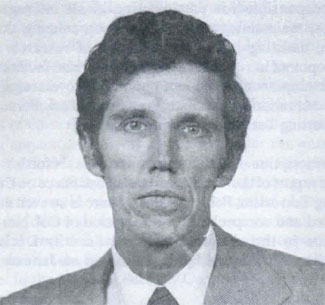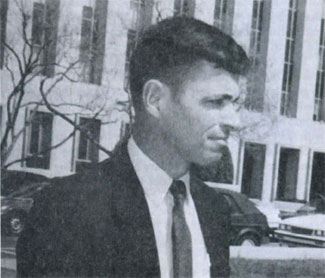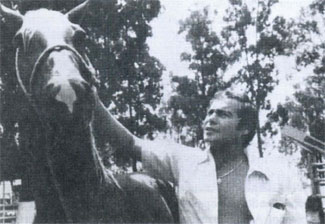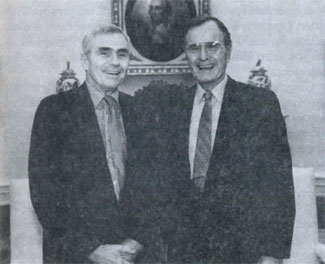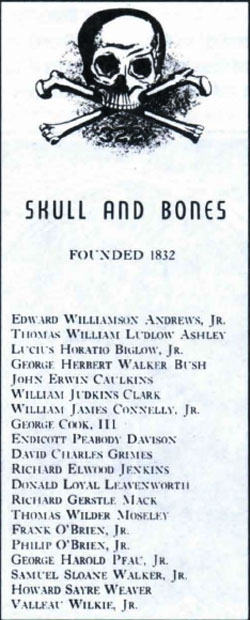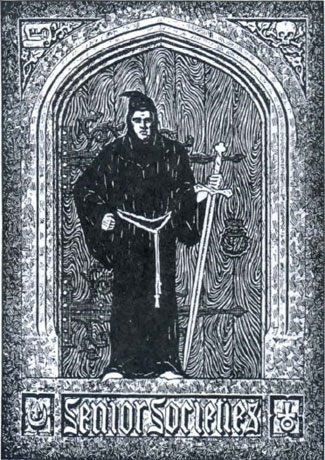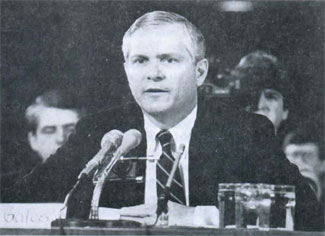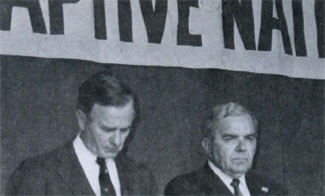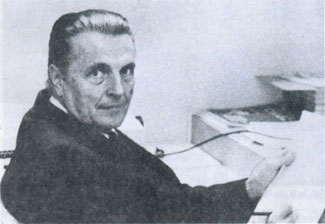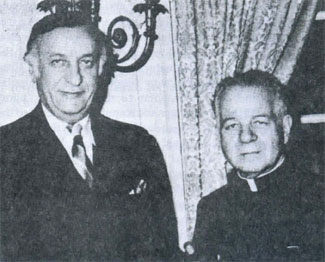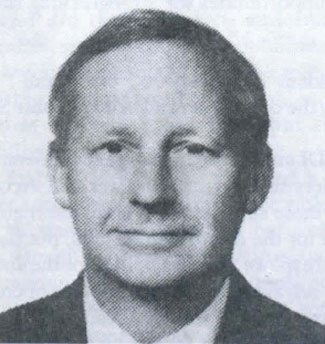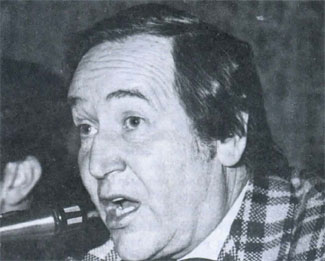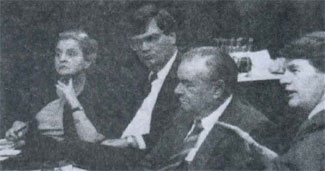Re: George Bush: The Company's Man, by Covert Action Informa
Ronald Reagan's Legacy: Eight Years of CIA Covert Action
by William Blum*
Winter 1990
NOTICE: THIS WORK MAY BE PROTECTED BY COPYRIGHT
Ronald Reagan was not the most interventionist American president of modern times. Dwight Eisenhower retains that honor, insofar as significant extralegal meddling in other countries' politics is concerned. Reagan intervened in the face of political obstacles which would most likely have inhibited Eisenhower or any other president to a marked degree.
Reagan presided over an American public grown extremely cynical and suspicious of the overseas adventures of the CIA, the U.S. military, and other arms of the U.S. Government. World opinion was yet more cynical. The previous decade had brought Indochina, Chile, Angola, Watergate, seemingly endless revelations about CIA misdeeds, exposes by former Agency officers, lengthy and relatively antagonistic Congressional investigations, oversight committees, professional CIA-watchers of the left and the center, and a media that had finally learned to ask some of the right questions and follow up on some of the right leads.
American destabilization and other covert operations of the 1950s did not have to deal with any of this; they did not face the glare of public exposure or censure until years after their occurrence, if ever.
In the 1980s, the information was leaked often within days, yet, in most cases, Reagan, CIA director William Casey, Oliver North & Co., et al., seemed unfazed by any of this.
CIA pilots bombed Indonesia in 1958 on several occasions, causing considerable death and destruction. In the United States, this was virtually a non-event. To this day, you will have to search long and hard to find any mention of it in standard works of reference, school texts, etc. In 1986, the U.S. bombed Libya and Reagan went on TV immediately to proudly announce the event.
For some 30 years, the CIA covertly funded foreign coups, counter-insurgency operations, politicians, political parties, labor unions, student organizations, book publishers, newspapers, and all manner of other, generally pro-capitalist and anti-communist institutions. Beginning in the 1970s, these activities, past and current, began to be exposed with alarming regularity and increasing embarrassment to Washington political leaders. Something had to be done.
What was done was not to end such activities. What was done by the Reagan administration was simply to make the activities ostensibly overt and thus, hopefully, eliminate the stigma associated with covert activities. It was a master stroke. Of politics, public relations, and cynicism.
In 1983, the National Endowment for Democracy (NED) was set up to "strengthen democratic institutions throughout the world through private, nongovernmental efforts." Funded by Congress, i.e., the American taxpayers, NED engages in much of the same kinds of interference in the internal affairs of foreign countries which are the hallmark of the CIA.
Some causes which have been supported by NED largesse were the following:
• Over $400,000 to the Center for Democracy, a New York-based foundation run by Soviet emigres which has used the Soviet human rights network, tourists, and "experienced" travelers to gather political and military information on the U.S.S.R. The Center has also smuggled American films with anti-Soviet themes (White Nights, Red Dawn and The Assassination of Trotsky) into the Soviet Union. [1]
• Several hundred thousand dollars since 1985 to La Prensa, the anti-Sandinista newspaper in Nicaragua, which can only be viewed as part of the Reagan administration's campaign to overthrow the government; several million more has been allocated to support organizations opposing the Sandinistas in elections scheduled for 1990. [2]
• Newspapers in other developing countries, including Grenada, Guyana, and Botswana. [3]
• Translation into Polish of a book that accuses the Soviet Union of a World War II massacre of Polish Army officers. The book was to be smuggled into Poland. [4]
• $400,000 a year to the Solidarity trade union in Poland, to clandestinely print underground publications, as well as funds for other political organizations, youth groups, and churches. This is in addition to several million dollars allocated to Solidarity by the U.S. Congress. [5]
• $830,000 to Force Ouvriere, the French anti-communist trade union which the CIA began funding in the 1940s.
• $575,000 to an extreme rightwing French group of paramilitary and criminal background, the National Inter-University Union. The funding of this group as well as Force Ouvriere was secret and is known of only because of its exposure by French journalists in November 1985. [6]
• $3 million to the Philippines, "quietly being spent to fight the communist insurgency ... and to cultivate political leaders there." Some of this money was channeled to the National Citizens Movement for Free Elections, which was set up by the CIA in the 1950s to support the presidential campaign of Ramon Magsaysay. [7]
The National Endowment for Democracy, like the CIA before it, calls this supporting democracy. The governments and movements against whom the financing is targeted, call it destabilization. The NED was not an aberration of an otherwise legal, accountable, non-interventionist Reagan foreign policy. Among the other stories of international intrigue and violence of the Reagan era worth noting are:
South Africa: Working closely with British intelligence, the U.S. provided South Africa with intelligence about the banned and exiled African National Congress, including specific warnings of planned attacks by the group and the whereabouts and movements of ANC leaders. [8] As part of South Africa's reciprocation, it sent 200,000 pounds of military equipment to contra leader Eden Pastora. [9]
Fiji: The coup of May 1987 bore all the fingerprints of a U.S. destabilization operation -- the deposed prime minister, Timoci Bavadra, in office only a month after being elected over the conservative former Prime Minister Ratu Mara, was intent upon enforcing the ban upon nuclear vessels in Fiji ports; two weeks before the coup, Gen. Vernon Walters, he of extensive CIA involvement over the years, visited Fiji and met with the army officer who staged the coup; at the same time, Ratu Mara was visiting U.S. military headquarters (CINCPAC) in Hawaii; the AFL-CIO/CIA labor mafia was well represented, working against the nuclear-free Pacific movement; and several other similar components of a now all-too- familiar scenario. [10]
Grenada: The invasion by the U.S. military in October 1983 was accompanied by a battalion of falsehoods that stands out even in an administration noted for its creation of dial-a-lie. The" democracy" installed in the country reached fruition this year when the government banned the importation, by name, of over 80 leftist books, and later suspended Parliament to block a no-confidence vote.
Libya: Along with Nicaragua, Ronald Reagan's manic obsession, culminating in the April 1986 bombing which took the lives of about 37 people, all civilians but one, and wounded some 93 others. The dead included Libyan leader Muammar Qaddafi's young adopted daughter; his other seven children and his wife were hospitalized. "Our evidence is direct, it is precise, it is irrefutable," announced the President of the United States in explaining that the bombing was in retaliation for the Libyan bombing nine days earlier of a West Berlin nightclub frequented by American servicemen which killed one soldier and injured many other soldiers and civilians. The evidence of Libyan culpability in the Berlin bombing, however, was never directly or precisely presented to the world.
Surinam: In December 1982, CIA Director William Casey told the House and Senate intelligence committees that President Reagan had authorized the CIA to try to topple Surinam ruler Col. Desi Bouterse, supposedly leading his country into "the Cuban orbit." Even though the committee refused to approve the covert operation, there is good reason to believe that the administration did what it wished. An invasion of the country was scheduled for July 1,1983 by Florida-based mercenaries - Americans and others. It was called off only after being discovered by the internal security agency of the Netherlands, the former colonial power in Surinam. [11]
Seychelles: The country's leader, France Albert Rene, amongst other shortcomings in the eyes of Washington, was a socialist, pursued non-alignment, and wanted to turn the Indian Ocean into a nuclear-free zone. For this he was the object of various American destabilization conspiracies beginning in 1979. In November 1981, the CIA reportedly was behind a mercenary invasion of the island nation which originated in South Africa and got no further than an armed battle at the Seychelles airport. [12]
El Salvador: The Reagan administration's bloodiest intervention. Largely obscured has been the extent of direct American involvement in the fighting. At least a dozen Americans have been killed or wounded in helicopter and plane crashes while flying reconnaissance or other missions over combat areas. [13] There have been numerous reports of armed Americans spotted in combat areas, [14] a report by CBS News of U.S. advisers "fighting side by side" with government troops, [15] and reports of other Americans, some ostensibly mercenaries, killed in action. [16] By 1983 there were more than two hundred U.S. intelligence agents (about two-thirds of them from the CIA) operating in El Salvador. At least until 1985, CIA paramilitary personnel were organizing and leading special Salvadoran army units into combat areas to track down guerrillas and call in air strikes. [17]
Lebanon: Another civil war the United States felt compelled to take part in, leading to the terrible bombings of the American Embassy and Marine barracks in 1983, followed, in December of that year, by American ships firing some 700 shells into the Beirut mountains, missing their military targets but causing destruction in civilian areas. In 1985, William Casey and a Saudi prince conspired to eliminate Muslim leader Sheikh Fadlallah, believed to be connected to the attacks on the American facilities. This plot culminated in March when the men employed to carry out the elimination drove a car bomb into a Beirut suburb near Fadlallah's residence. The explosion took 80 lives, wounded 200, and left widespread devastation. Fadlallah escaped without injury. [18]
Dominica: "Financial support to the Freedom Party of Eugenia Charles to defeat Oliver Seraphin in the Dominican elections." In 1980 Charles won the election. [19]
Mauritius: In 1981-82, financial support was given to Seewoosagar Ramgoolam in an attempt to bring him to power in the 1982 elections. Ramgoolam did not win in the elections. [20]
Chad: In 1981, the administration formally decided to supply Hissene Habre in his attempt to overthrow the government of Goukouni Oueddei. Through the CIA, Habre was supplied with money, arms and ammunition, and other equipment. "The operation was coordinated with Egypt, ... which furnished Habre with weapons and ammunition in exchange for U.S. replacements." [21] Sudan provided a base of operations and a supply-line. American commitment increased several times during 1981, ending with a total of about $10 million. In June 1982 Habre's men "took control of N'Djamena, the capital of Chad, and set up a provisional government." [22]
Afghanistan: Approximately $625 million was appropriated between 1980-84, "including about $40 million reprogrammed from the Pentagon budget and as much as $250 million in fiscal year 1985 alone." [23] Afghanistan has become one of the most expensive covert actions in American history. This money was used in continuing military aid to the rebel forces of Zia Khan Nassery, Gulbuddin Hekmatyar, Sayed Ahmed Gailani and to conservative mullahs "to harass Soviet occupation forces and challenge the legitimacy of the government of Babrak Karmal." [24] The Afghanistan rebels also received monies from the National Endowment for Democracy. This included one grant of $180,000 ostensibly for their school system; but in the extreme chaos of the war area, there can be no satisfactory way of determining what the ultimate disposition of the money was; this can only be viewed as part of the Reagan administration's campaign to overthrow the government supported by the Soviet Union. (This is ironic in light of the deep loathing Americans feel for the government of Iran, for if the Afghan rebels take power they will undoubtedly create a similar fundamentalist Islamic state.)
Ethiopia: A support operation of about $500,000 per year for the opposition to the so-called Marxist government. [25]
Cambodia: Several million dollars a year for the forces fighting against the Vietnamese-backed government, a policy which indirectly benefited the notorious Khmer Rouge. [26]
Angola: In 1985 the Clark Amendment banning covert military aid to Angolan rebels was lifted and Reagan ordered the release of $13 million in covert aid to Jonas Savimbi's UNITA forces. As Reagan left the White House, the CIA was reportedly expending at least $45 million annually to back Savimbi. According to government sources, profits generated from the illegal sale of arms to Iran, as well as money intended for the Afghan rebels, also may have been used to fund UNITA. [27]
Argentina: "Aid and training were provided (in 1981) to the contras through the Argentinean Defense Forces in exchange for other forms of aid from the U.S. to Argentina. This arrangement. .. avoided detailed congressional scrutiny and public explanations, and ... hid the cost in various aid budgets for Argentina." [28] CIA-Argentine cooperation ended when the U.S. supported Britain in the 1982 Malvinas War.
Nicaragua: A traditional, multi-level, multi-millions-of-dollars, CIA destabilization operation to overthrow the government: economic boycott and cut off of international credit; crippling of the oil supply by blowing up fuel depots, ports, and pipelines, and mining the waters of oil-unloading ports; extensive damage to the agricultural infrastructure; covert funding of private organizations and the Catholic church which were actively subverting the government; a major military campaign in support of the contra rebels, including U.S. reconnaissance flights over Nicaragua and U.S. pilots flying combat and supply missions; several attempts to assassinate the Sandinista leadership; a major attempt to undermine the 1984 elections which the Sandinistas won handily. [29]
Honduras: Honduras was turned into a launching area and support base for the Nicaragua operation: landing strips, docks, radar stations and communication centers were built under the cover of repeated U.S.-Honduran military exercises. For seven years, attacks were carried out against Nicaragua from the soil of a supposedly neutral Honduras. [30]
The eight years of the Reagan administration brought an unparalleled growth in CIA covert activities and U.S. intervention abroad. This listing is only a sample of hundreds of operations that sought to destabilize foreign governments and have diminished the prospects for international peace. The victims of CIA interventions will remember the Reagan years far into the future.
Now a new U.S. president is on the scene speaking of "a kinder and gentler America." How willing are the people of Angola, Nicaragua, El Salvador, and Cambodia to believe the former Director of Central Intelligence? George Bush will likely carry on the Reagan legacy, even in light of changes in U.S.-Soviet relations. It promises to be a long four years.
_______________
Notes:
* William Blum is the author of The CIA: A Forgotten History, U.S. Global Interventions Since World War 2 (London: Zed Books, 1986). A revised edition will be published by St. Martin's Press in 1990. Additional research provided by Reginald McGuire.
1. Kevin Coogan and Katrina Vanden Heuvel, "U.S. Funds for Soviet Dissidents," The Nation, March 19, 1988.
2. New York Times, April 25, 1989, p. 8.
3. Laurien Alexandre, "War Without End: Propaganda and Public Diplomacy in the Reagan Era," Extra!, July/August 1988, p. 9.
4. New York Times, September 18, 1988, p. 4.
5. New York Times, July 10, 1988.
6. Liberation (Paris), November 27, 1985; Washington Past, November 28, 1985, p. A50; The Guardian (London), November 28, 1985, p. 6.
7. San Francisco Examiner, July 21, 1985; Raymond Bonner, Waltzing With A Dictator (New York: Vintage Books, 1988), p. 414.
8. New York Times, July 23, 1986, p. 1.
9. New York Times, August 20, 1987, p. 1.
10. The Nation, August 15-22, 1987, p. 117; National Reporter, Fall 1987, p. 33.
11. New York Times, July 19,1983.
12. Sunday Tribune (Durban, South Africa), November 29, 1981, pp. 1 and 52.
13. The Guardian (London), February 5,1983; New York Times, March 30, 1984, p. 1, October 20, 1984; San Francisco Chronicle, July 17, 1987.
14. Washington Past, February 14, 1982, p. 1; The Guardian (London), March 26, 1984, October 22, 1984; New York Times, February 13,1982, October 21, 1984, February 12, 1985, February 13, 1986, p. 3, April 1, 1987, p. 1; Michael McClintock, The American Connection: State Terror and Popular Resistance in El Salvador (London: Zed Books, 1985), pp. 347-48.
15. San Francisco Chronicle, June 24, 1982.
16. Washington Past, December 19, 1980, p. A26; January 1, 1981, p. A12.
17. Los Angeles Times, July 9, 1987, pp. 1 and 22.
18. Bob Woodward, Veil: The Secret Wars of the CIA 1981-1987 (New York: Simon and Schuster, 1987), pp. 396-97.
19. Darrell Garwood, Undercover: 35 Years of CIA Deception (New York: Grove Press, 1985), p. 298.
20. Ibid., p. 298.
21. Jay Peterzell, Reagan's Secret Wars (Washington, D.C.: The Center for National Security Studies, 1984), p. 47.
22. Op. cit., n. 18, p. 215; Op. cit., n. 19, p. 299.
23. John Prados, Presidents' Secret Wars: CIA and Pentagon Covert Operations Since World War II (New York: William Morrow and Company, 1986), p. 360.
24. Op. cit., n. 19, p. 298; John Ranelagh, The Agency: The Rise and Decline of the CIA from Wild Bill Donovan to William Casey (New York: Simon and Schuster, 1986), p. 682; op. cit., n. 18, p. 372.
25. Op. cit., n. 18, p. 373.
26. Op. cit., n. 18, pp. 216, 373, and 385.
27. William Blum, The CIA: A Forgotten History (London: Zed Books, 1986), p. 291; Sanford J. Ungar and Arnold Kohen, "An Angola Angle to the Scandal?" New York Times, January 20, 1987; Washington Past, April 25, 1989, October 23, 1989.
28. Ranelagh, op. cit., n. 24, pp. 680-81; CovertAction Information Bulletin, Number 16, March 1982, pp. 14-16.
29. Op. cit., n. 27, pp. 330-44.
30. Op. cit., n. 27, pp. 333-38.
by William Blum*
Winter 1990
NOTICE: THIS WORK MAY BE PROTECTED BY COPYRIGHT
YOU ARE REQUIRED TO READ THE COPYRIGHT NOTICE AT THIS LINK BEFORE YOU READ THE FOLLOWING WORK, THAT IS AVAILABLE SOLELY FOR PRIVATE STUDY, SCHOLARSHIP OR RESEARCH PURSUANT TO 17 U.S.C. SECTION 107 AND 108. IN THE EVENT THAT THE LIBRARY DETERMINES THAT UNLAWFUL COPYING OF THIS WORK HAS OCCURRED, THE LIBRARY HAS THE RIGHT TO BLOCK THE I.P. ADDRESS AT WHICH THE UNLAWFUL COPYING APPEARED TO HAVE OCCURRED. THANK YOU FOR RESPECTING THE RIGHTS OF COPYRIGHT OWNERS.
Ronald Reagan was not the most interventionist American president of modern times. Dwight Eisenhower retains that honor, insofar as significant extralegal meddling in other countries' politics is concerned. Reagan intervened in the face of political obstacles which would most likely have inhibited Eisenhower or any other president to a marked degree.
Reagan presided over an American public grown extremely cynical and suspicious of the overseas adventures of the CIA, the U.S. military, and other arms of the U.S. Government. World opinion was yet more cynical. The previous decade had brought Indochina, Chile, Angola, Watergate, seemingly endless revelations about CIA misdeeds, exposes by former Agency officers, lengthy and relatively antagonistic Congressional investigations, oversight committees, professional CIA-watchers of the left and the center, and a media that had finally learned to ask some of the right questions and follow up on some of the right leads.
American destabilization and other covert operations of the 1950s did not have to deal with any of this; they did not face the glare of public exposure or censure until years after their occurrence, if ever.
In the 1980s, the information was leaked often within days, yet, in most cases, Reagan, CIA director William Casey, Oliver North & Co., et al., seemed unfazed by any of this.
CIA pilots bombed Indonesia in 1958 on several occasions, causing considerable death and destruction. In the United States, this was virtually a non-event. To this day, you will have to search long and hard to find any mention of it in standard works of reference, school texts, etc. In 1986, the U.S. bombed Libya and Reagan went on TV immediately to proudly announce the event.
For some 30 years, the CIA covertly funded foreign coups, counter-insurgency operations, politicians, political parties, labor unions, student organizations, book publishers, newspapers, and all manner of other, generally pro-capitalist and anti-communist institutions. Beginning in the 1970s, these activities, past and current, began to be exposed with alarming regularity and increasing embarrassment to Washington political leaders. Something had to be done.
What was done was not to end such activities. What was done by the Reagan administration was simply to make the activities ostensibly overt and thus, hopefully, eliminate the stigma associated with covert activities. It was a master stroke. Of politics, public relations, and cynicism.
In 1983, the National Endowment for Democracy (NED) was set up to "strengthen democratic institutions throughout the world through private, nongovernmental efforts." Funded by Congress, i.e., the American taxpayers, NED engages in much of the same kinds of interference in the internal affairs of foreign countries which are the hallmark of the CIA.
Some causes which have been supported by NED largesse were the following:
• Over $400,000 to the Center for Democracy, a New York-based foundation run by Soviet emigres which has used the Soviet human rights network, tourists, and "experienced" travelers to gather political and military information on the U.S.S.R. The Center has also smuggled American films with anti-Soviet themes (White Nights, Red Dawn and The Assassination of Trotsky) into the Soviet Union. [1]
• Several hundred thousand dollars since 1985 to La Prensa, the anti-Sandinista newspaper in Nicaragua, which can only be viewed as part of the Reagan administration's campaign to overthrow the government; several million more has been allocated to support organizations opposing the Sandinistas in elections scheduled for 1990. [2]
• Newspapers in other developing countries, including Grenada, Guyana, and Botswana. [3]
• Translation into Polish of a book that accuses the Soviet Union of a World War II massacre of Polish Army officers. The book was to be smuggled into Poland. [4]
• $400,000 a year to the Solidarity trade union in Poland, to clandestinely print underground publications, as well as funds for other political organizations, youth groups, and churches. This is in addition to several million dollars allocated to Solidarity by the U.S. Congress. [5]
• $830,000 to Force Ouvriere, the French anti-communist trade union which the CIA began funding in the 1940s.
• $575,000 to an extreme rightwing French group of paramilitary and criminal background, the National Inter-University Union. The funding of this group as well as Force Ouvriere was secret and is known of only because of its exposure by French journalists in November 1985. [6]
• $3 million to the Philippines, "quietly being spent to fight the communist insurgency ... and to cultivate political leaders there." Some of this money was channeled to the National Citizens Movement for Free Elections, which was set up by the CIA in the 1950s to support the presidential campaign of Ramon Magsaysay. [7]
The National Endowment for Democracy, like the CIA before it, calls this supporting democracy. The governments and movements against whom the financing is targeted, call it destabilization. The NED was not an aberration of an otherwise legal, accountable, non-interventionist Reagan foreign policy. Among the other stories of international intrigue and violence of the Reagan era worth noting are:
South Africa: Working closely with British intelligence, the U.S. provided South Africa with intelligence about the banned and exiled African National Congress, including specific warnings of planned attacks by the group and the whereabouts and movements of ANC leaders. [8] As part of South Africa's reciprocation, it sent 200,000 pounds of military equipment to contra leader Eden Pastora. [9]
Fiji: The coup of May 1987 bore all the fingerprints of a U.S. destabilization operation -- the deposed prime minister, Timoci Bavadra, in office only a month after being elected over the conservative former Prime Minister Ratu Mara, was intent upon enforcing the ban upon nuclear vessels in Fiji ports; two weeks before the coup, Gen. Vernon Walters, he of extensive CIA involvement over the years, visited Fiji and met with the army officer who staged the coup; at the same time, Ratu Mara was visiting U.S. military headquarters (CINCPAC) in Hawaii; the AFL-CIO/CIA labor mafia was well represented, working against the nuclear-free Pacific movement; and several other similar components of a now all-too- familiar scenario. [10]
Grenada: The invasion by the U.S. military in October 1983 was accompanied by a battalion of falsehoods that stands out even in an administration noted for its creation of dial-a-lie. The" democracy" installed in the country reached fruition this year when the government banned the importation, by name, of over 80 leftist books, and later suspended Parliament to block a no-confidence vote.
Libya: Along with Nicaragua, Ronald Reagan's manic obsession, culminating in the April 1986 bombing which took the lives of about 37 people, all civilians but one, and wounded some 93 others. The dead included Libyan leader Muammar Qaddafi's young adopted daughter; his other seven children and his wife were hospitalized. "Our evidence is direct, it is precise, it is irrefutable," announced the President of the United States in explaining that the bombing was in retaliation for the Libyan bombing nine days earlier of a West Berlin nightclub frequented by American servicemen which killed one soldier and injured many other soldiers and civilians. The evidence of Libyan culpability in the Berlin bombing, however, was never directly or precisely presented to the world.
Surinam: In December 1982, CIA Director William Casey told the House and Senate intelligence committees that President Reagan had authorized the CIA to try to topple Surinam ruler Col. Desi Bouterse, supposedly leading his country into "the Cuban orbit." Even though the committee refused to approve the covert operation, there is good reason to believe that the administration did what it wished. An invasion of the country was scheduled for July 1,1983 by Florida-based mercenaries - Americans and others. It was called off only after being discovered by the internal security agency of the Netherlands, the former colonial power in Surinam. [11]
Seychelles: The country's leader, France Albert Rene, amongst other shortcomings in the eyes of Washington, was a socialist, pursued non-alignment, and wanted to turn the Indian Ocean into a nuclear-free zone. For this he was the object of various American destabilization conspiracies beginning in 1979. In November 1981, the CIA reportedly was behind a mercenary invasion of the island nation which originated in South Africa and got no further than an armed battle at the Seychelles airport. [12]
El Salvador: The Reagan administration's bloodiest intervention. Largely obscured has been the extent of direct American involvement in the fighting. At least a dozen Americans have been killed or wounded in helicopter and plane crashes while flying reconnaissance or other missions over combat areas. [13] There have been numerous reports of armed Americans spotted in combat areas, [14] a report by CBS News of U.S. advisers "fighting side by side" with government troops, [15] and reports of other Americans, some ostensibly mercenaries, killed in action. [16] By 1983 there were more than two hundred U.S. intelligence agents (about two-thirds of them from the CIA) operating in El Salvador. At least until 1985, CIA paramilitary personnel were organizing and leading special Salvadoran army units into combat areas to track down guerrillas and call in air strikes. [17]
Lebanon: Another civil war the United States felt compelled to take part in, leading to the terrible bombings of the American Embassy and Marine barracks in 1983, followed, in December of that year, by American ships firing some 700 shells into the Beirut mountains, missing their military targets but causing destruction in civilian areas. In 1985, William Casey and a Saudi prince conspired to eliminate Muslim leader Sheikh Fadlallah, believed to be connected to the attacks on the American facilities. This plot culminated in March when the men employed to carry out the elimination drove a car bomb into a Beirut suburb near Fadlallah's residence. The explosion took 80 lives, wounded 200, and left widespread devastation. Fadlallah escaped without injury. [18]
Profits generated from the illegal sale of arms to Iran ... may have been used to fund UNITA.
Dominica: "Financial support to the Freedom Party of Eugenia Charles to defeat Oliver Seraphin in the Dominican elections." In 1980 Charles won the election. [19]
Mauritius: In 1981-82, financial support was given to Seewoosagar Ramgoolam in an attempt to bring him to power in the 1982 elections. Ramgoolam did not win in the elections. [20]
Chad: In 1981, the administration formally decided to supply Hissene Habre in his attempt to overthrow the government of Goukouni Oueddei. Through the CIA, Habre was supplied with money, arms and ammunition, and other equipment. "The operation was coordinated with Egypt, ... which furnished Habre with weapons and ammunition in exchange for U.S. replacements." [21] Sudan provided a base of operations and a supply-line. American commitment increased several times during 1981, ending with a total of about $10 million. In June 1982 Habre's men "took control of N'Djamena, the capital of Chad, and set up a provisional government." [22]
Afghanistan: Approximately $625 million was appropriated between 1980-84, "including about $40 million reprogrammed from the Pentagon budget and as much as $250 million in fiscal year 1985 alone." [23] Afghanistan has become one of the most expensive covert actions in American history. This money was used in continuing military aid to the rebel forces of Zia Khan Nassery, Gulbuddin Hekmatyar, Sayed Ahmed Gailani and to conservative mullahs "to harass Soviet occupation forces and challenge the legitimacy of the government of Babrak Karmal." [24] The Afghanistan rebels also received monies from the National Endowment for Democracy. This included one grant of $180,000 ostensibly for their school system; but in the extreme chaos of the war area, there can be no satisfactory way of determining what the ultimate disposition of the money was; this can only be viewed as part of the Reagan administration's campaign to overthrow the government supported by the Soviet Union. (This is ironic in light of the deep loathing Americans feel for the government of Iran, for if the Afghan rebels take power they will undoubtedly create a similar fundamentalist Islamic state.)
Ethiopia: A support operation of about $500,000 per year for the opposition to the so-called Marxist government. [25]
Cambodia: Several million dollars a year for the forces fighting against the Vietnamese-backed government, a policy which indirectly benefited the notorious Khmer Rouge. [26]
Angola: In 1985 the Clark Amendment banning covert military aid to Angolan rebels was lifted and Reagan ordered the release of $13 million in covert aid to Jonas Savimbi's UNITA forces. As Reagan left the White House, the CIA was reportedly expending at least $45 million annually to back Savimbi. According to government sources, profits generated from the illegal sale of arms to Iran, as well as money intended for the Afghan rebels, also may have been used to fund UNITA. [27]
Argentina: "Aid and training were provided (in 1981) to the contras through the Argentinean Defense Forces in exchange for other forms of aid from the U.S. to Argentina. This arrangement. .. avoided detailed congressional scrutiny and public explanations, and ... hid the cost in various aid budgets for Argentina." [28] CIA-Argentine cooperation ended when the U.S. supported Britain in the 1982 Malvinas War.
Nicaragua: A traditional, multi-level, multi-millions-of-dollars, CIA destabilization operation to overthrow the government: economic boycott and cut off of international credit; crippling of the oil supply by blowing up fuel depots, ports, and pipelines, and mining the waters of oil-unloading ports; extensive damage to the agricultural infrastructure; covert funding of private organizations and the Catholic church which were actively subverting the government; a major military campaign in support of the contra rebels, including U.S. reconnaissance flights over Nicaragua and U.S. pilots flying combat and supply missions; several attempts to assassinate the Sandinista leadership; a major attempt to undermine the 1984 elections which the Sandinistas won handily. [29]
Honduras: Honduras was turned into a launching area and support base for the Nicaragua operation: landing strips, docks, radar stations and communication centers were built under the cover of repeated U.S.-Honduran military exercises. For seven years, attacks were carried out against Nicaragua from the soil of a supposedly neutral Honduras. [30]
The eight years of the Reagan administration brought an unparalleled growth in CIA covert activities and U.S. intervention abroad. This listing is only a sample of hundreds of operations that sought to destabilize foreign governments and have diminished the prospects for international peace. The victims of CIA interventions will remember the Reagan years far into the future.
Now a new U.S. president is on the scene speaking of "a kinder and gentler America." How willing are the people of Angola, Nicaragua, El Salvador, and Cambodia to believe the former Director of Central Intelligence? George Bush will likely carry on the Reagan legacy, even in light of changes in U.S.-Soviet relations. It promises to be a long four years.
_______________
Notes:
* William Blum is the author of The CIA: A Forgotten History, U.S. Global Interventions Since World War 2 (London: Zed Books, 1986). A revised edition will be published by St. Martin's Press in 1990. Additional research provided by Reginald McGuire.
1. Kevin Coogan and Katrina Vanden Heuvel, "U.S. Funds for Soviet Dissidents," The Nation, March 19, 1988.
2. New York Times, April 25, 1989, p. 8.
3. Laurien Alexandre, "War Without End: Propaganda and Public Diplomacy in the Reagan Era," Extra!, July/August 1988, p. 9.
4. New York Times, September 18, 1988, p. 4.
5. New York Times, July 10, 1988.
6. Liberation (Paris), November 27, 1985; Washington Past, November 28, 1985, p. A50; The Guardian (London), November 28, 1985, p. 6.
7. San Francisco Examiner, July 21, 1985; Raymond Bonner, Waltzing With A Dictator (New York: Vintage Books, 1988), p. 414.
8. New York Times, July 23, 1986, p. 1.
9. New York Times, August 20, 1987, p. 1.
10. The Nation, August 15-22, 1987, p. 117; National Reporter, Fall 1987, p. 33.
11. New York Times, July 19,1983.
12. Sunday Tribune (Durban, South Africa), November 29, 1981, pp. 1 and 52.
13. The Guardian (London), February 5,1983; New York Times, March 30, 1984, p. 1, October 20, 1984; San Francisco Chronicle, July 17, 1987.
14. Washington Past, February 14, 1982, p. 1; The Guardian (London), March 26, 1984, October 22, 1984; New York Times, February 13,1982, October 21, 1984, February 12, 1985, February 13, 1986, p. 3, April 1, 1987, p. 1; Michael McClintock, The American Connection: State Terror and Popular Resistance in El Salvador (London: Zed Books, 1985), pp. 347-48.
15. San Francisco Chronicle, June 24, 1982.
16. Washington Past, December 19, 1980, p. A26; January 1, 1981, p. A12.
17. Los Angeles Times, July 9, 1987, pp. 1 and 22.
18. Bob Woodward, Veil: The Secret Wars of the CIA 1981-1987 (New York: Simon and Schuster, 1987), pp. 396-97.
19. Darrell Garwood, Undercover: 35 Years of CIA Deception (New York: Grove Press, 1985), p. 298.
20. Ibid., p. 298.
21. Jay Peterzell, Reagan's Secret Wars (Washington, D.C.: The Center for National Security Studies, 1984), p. 47.
22. Op. cit., n. 18, p. 215; Op. cit., n. 19, p. 299.
23. John Prados, Presidents' Secret Wars: CIA and Pentagon Covert Operations Since World War II (New York: William Morrow and Company, 1986), p. 360.
24. Op. cit., n. 19, p. 298; John Ranelagh, The Agency: The Rise and Decline of the CIA from Wild Bill Donovan to William Casey (New York: Simon and Schuster, 1986), p. 682; op. cit., n. 18, p. 372.
25. Op. cit., n. 18, p. 373.
26. Op. cit., n. 18, pp. 216, 373, and 385.
27. William Blum, The CIA: A Forgotten History (London: Zed Books, 1986), p. 291; Sanford J. Ungar and Arnold Kohen, "An Angola Angle to the Scandal?" New York Times, January 20, 1987; Washington Past, April 25, 1989, October 23, 1989.
28. Ranelagh, op. cit., n. 24, pp. 680-81; CovertAction Information Bulletin, Number 16, March 1982, pp. 14-16.
29. Op. cit., n. 27, pp. 330-44.
30. Op. cit., n. 27, pp. 333-38.
